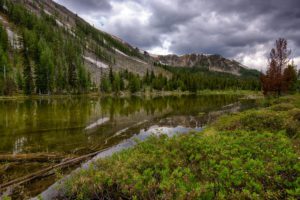For Immediate Release, August 28, 2023
Contact:Wendy Schneider, Friends of the Inyo, (310) 849-3662, wendy@friendsoftheinyo.org
Ileene Anderson, Center for Biological Diversity, (323) 490-0223, ianderson@biologicaldiversity.org
Laura Cunningham, Western Watersheds Project, (775) 513-1280, lcunningham@westernwatersheds.org
Project Threatened Imperiled Wildlife, Endangered Fish
SAN FRANCISCO— A federal appeals court reversed the decision of a lower court that would have allowed exploratory drilling in California’s Sierra Nevada Mountains. The drilling threatened to harm an endangered fish and a dwindling population of bi-state sage grouse.
“We are so thrilled that the appellate court acted quickly,” said Wendy Schneider, executive director of Friends of the Inyo. “The impacts to the ecosystem, including sensitive species, and to the local community deserve an in-depth, detailed evaluation. Friends of the Inyo will keep working to protect this special area from destructive mining impacts.”
Because the company had planned to begin drilling as early as Sept. 1, Friday’s ruling from the 9th U.S. Circuit Court of Appeals came just one day after oral arguments.
In a short ruling that promised a longer opinion later, the appeals court reversed the district court’s decision and overturned the U.S. Forest Service’s 2021 approval that allowed gold-mining exploration in sensitive habitat in Inyo National Forest’s Long Valley area.
“This mining exploration could easily disrupt the local bi-state sage grouse population, harming these birds’ habitat and causing them to abandon a courtship area they rely on,” said Ileene Anderson, a senior scientist at the Center for Biological Diversity. “These charismatic, unique sage grouse are already struggling to survive, and further destruction of their home would push them closer to extinction.”
In their 2021 lawsuit, conservation groups said the Forest Service’s use of two categorical exclusions, rather than more detailed environmental review, effectively ignored the mining project’s effects on sage grouse in the area, as well as the potential harm to nearby Hot Creek where endangered Owens tui chub live.
Friday’s ruling invalidates the Forest Service’s environmental review, which relied on two categorical exclusions to conclude that no harm would be done by the project.
Bi-state sage grouse, whose numbers have drastically declined in the past decade, live next to 12 proposed drilling pads, project roads and access roads. The birds are a genetically distinct population of greater sage grouse, famous for their showy plumage and mating dances, during which the males make popping sounds with large, inflated air sacs. They live only in an area along the California-Nevada border and face multiple threats.
“Gold exploration and drilling would harm sensitive habitat for the imperiled bi-state distinct population of greater sage grouse and could result in abandonment of this area by the birds,” said Laura Cunningham, California director at Western Watersheds Project. “We are also concerned about water quality in Hot Creek, a thermal stream and habitat of the Owens tui chub, a native fish unique to the Owens River system.”
The Forest Service attempted to shoehorn the mining exploration into a “short-term” categorical exclusion lasting less than a year, even though the remediation of the drilling sites would take much longer than a year in this snowy, remote area.
“Exploratory drilling for gold can cause a lot of harm to the environment in a year, especially to sensitive wildlife habitat” said Lynn Boulton, chair of the Sierra Club’s Range of Light Group, Toiyabe Chapter. “After the 9th Circuit’s ruling, the Forest Service will now have to prepare a comprehensive environmental assessment subject to full public review — as it should have done from the start.”
The groups are represented by Roger Flynn of the Western Mining Action Project, Talasi Brooks of Western Watersheds Project, and Lisa Belenky of the Center for Biological Diversity.
—
The Center for Biological Diversity is a national, nonprofit conservation organization with more than 1.7 million members and online activists dedicated to the protection of endangered species and wild places.
Western Watersheds Project is a nonprofit conservation group with over 14,000 members and supporters, as well as field offices across the western U.S. We work to influence and improve public lands management throughout the West with a primary focus on the negative impacts of livestock grazing on 250 million acres of western public lands, including harm to ecological, biological, cultural, historic, archeological, scenic resources, wilderness values, roadless areas, Wilderness Study Areas and designated Wilderness.
Founded in 1986, Friends of the Inyo is a nonprofit grassroots environmental organization. Our mission is to protect and care for the lands of Payahuunadu, also known as California’s Eastern Sierra. Our working area covers Inyo and Mono Counties, stretching from Lone Pine to Bridgeport, including three national forests and two BLM field offices. On behalf of our approximately, 4,000 members and supporters, we advocate for healthy environments across the diverse ecosystems that make up our working area. We also lead educational events and outings, including for local and visiting youth, and partner with federal agencies to engage in direct stewardship activities.
The Sierra Club was founded in 1892 and is the nation’s oldest grass-roots environmental organization. Sierra Club’s mission is to explore, enjoy, and protect the wild places of the Earth; to practice and promote the responsible use of the Earth’s ecosystems and resources; to educate and enlist humanity to protect and restore the quality of the natural and human environment; and use all lawful means to carry out these objectives. The Range of Light Group is a group within the Toiyabe Chapter that covers the geographic region of Inyo and Mono Counties.






